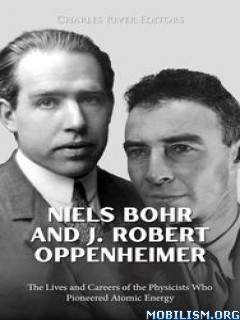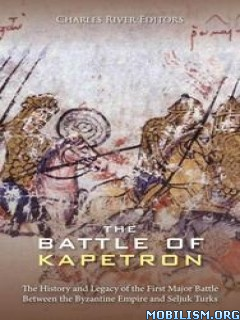Niels Bohr and J. Robert Oppenheimer: The Lives and Careers of the Physicists Who Pioneered Atomic Energy by Charles River EditorsRequirements: .ePUB reader, 10 Mb
Overview: Sticky, flaky pastries injected with generous dollops of custard or fruit fillings. The iconic, brightly colored building blocks better known as Lego bricks. The scenic Nyhavn, a picturesque waterfront and entertainment district featuring a variety of traditional vessels and multicolored houses that color the reflections of the canal’s glass-like surface. These are only a few of the plentiful fruits that have blossomed on Danish soil, and they demonstrate some of the many reasons why Denmark has been crowned among the top three happiest countries in the world (out of 155 nations surveyed) for seven consecutive years and counting.
The Danes have incorporated a system that prizes a balance between work and play, the concept of “hygge,” solid investments made towards the treatment of mental illness, and a stellar welfare model. That has helped ensure that an endless stream of intellectuals, inventors, creative legends, and pioneers have hailed from Denmark over many centuries, from classical scholar Ada Adler to fabled 16th century astronomer Tycho Brahe. One of the most famous, and important, is Niels Bohr, a world-famous physicist and one of the patriarchs of quantum theory. Given the vibrant, peaceful haven that is Denmark today, it’s somewhat ironic that Bohr played an instrumental role in the development of the atomic bomb. Even so, the truth and depth of the matter, much like the self-professed pacifist himself, is far more complex.
Genre: Non-Fiction > History

The Manhattan Project would ultimately yield the “Little Boy” and “Fat Man” bombs that released more than 100 Terajoules of energy at Hiroshima and Nagasaki, but as it turned out, the Axis were not far behind with their own nuclear weapons program. When the Nazis’ quest for a nuclear weapon began in earnest in 1939, no one really had a handle on how important nuclear weapons would prove to war and geopolitics. The attacks on Hiroshima and Nagasaki in August 1945, along with the Cold War-era tests and their accompanying mushroom clouds, would demonstrate the true power and terror of nuclear weapons, but in the late 1930s these bombs were only vaguely being thought through, particularly after the successful first experiment to split the atom by a German scientist. The nuclear age itself was in its infancy, barely 35 years old, but within a few short years the advent of nuclear war loomed over the world and the prospect of the enemy winning the nuclear race kept Allied leaders awake at night.
The pursuit of nuclear weapons moved the scientist nearer to the role of combatant, placing special responsibilities on the scientific community to make critical moral decisions. However, as they developed atomic weapons, they could at the same time only warn military powers of their use. Advocates for nuclear power as a civilian energy resource but expressing misgivings about nuclear war put them at odds with uninformed branches of the military. The American government and the population at large, who possessed little understanding of the perilous science behind the technology, brought about charges of unpatriotic behavior for such misgivings. Scientists, meanwhile, were caught between the excitement of creating a new paradigm, and the dread of their eventual use.
The American war effort against the Japanese and Germans also included denying either one the use of a practical nuclear weapon. Physics was in its highest stage of advancement in Europe during this time, while J. Robert Oppenheimer emerged as an extraordinary scientific mind in the United States. Despite requiring the work of thousands of scientists and assistants in fashioning the weapon that eventually came to pass, Oppenheimer alone has been become renowned as the “father of the atomic bomb” due to his leadership of the Manhattan Project.
Download Instructions:https://ouo.io/2rKcX1https://rapidgator.net/file/88d545d27d0 … .epub.html.





